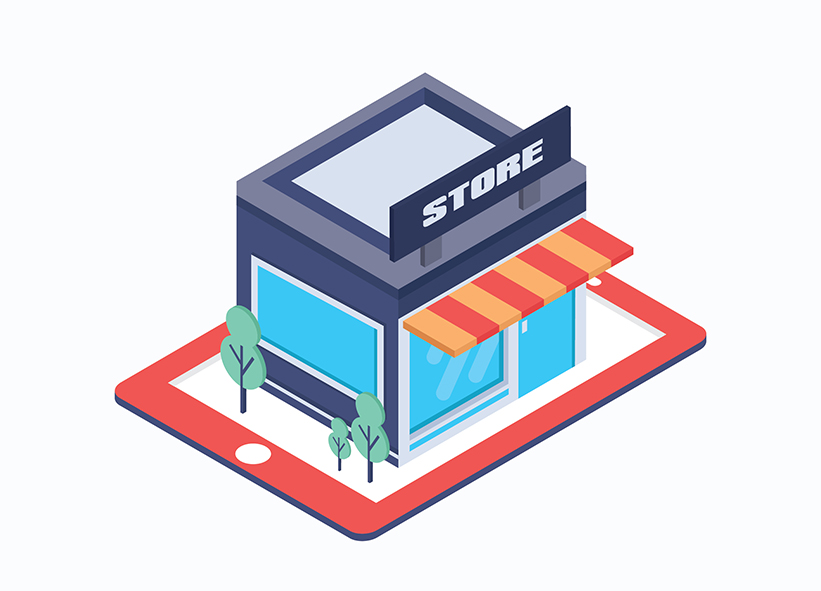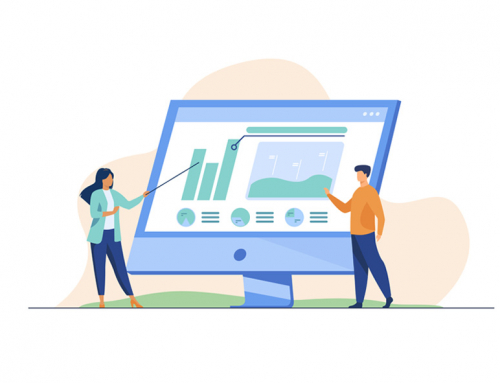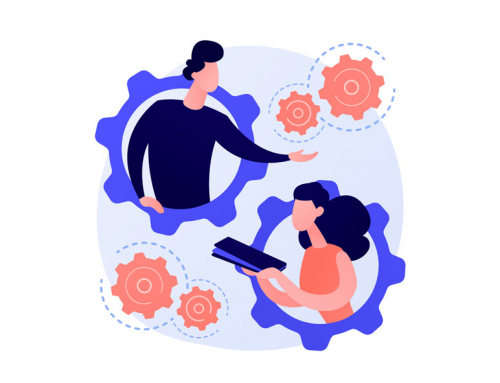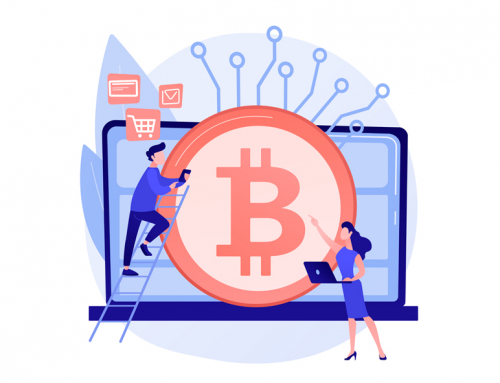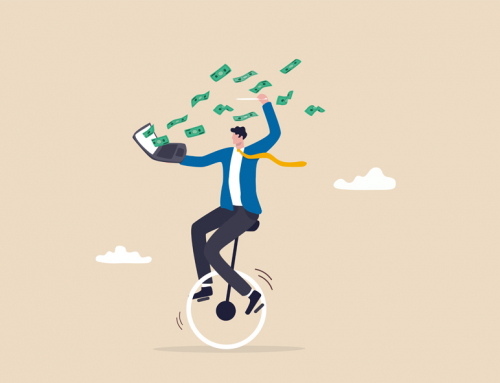Small businesses will have to adapt to the new environment. Agglomerations will not be possible, queues controlled, collection, pre-ordering. All that will be necessary to survive.
Do physical outlets still have a future?
The physical store will not succumb to the e-commerce boom. But it will focus on its strength: the shopping experience. It will use resources such as smart testers, augmented reality and biometric payments.
What would your ideal shopping day be like?
You’d probably go into a store and find what you’re looking for at first. That somehow magical and mysterious they knew what products you needed (maybe even better than you did) and were available and in sight. To be able to know all the information about each item just by focusing on it with your mobile phone. To see it even without taking it out of the box. Trying on clothes without tails. Coming alone? No problem. The fitting room would tell the salesgirl to bring you another size. Or he’d take a video and send it to his cell phone so he could ask anyone’s opinion. And finally, walk out the door without having to go through the checkout line. A device would recognize your face and the items you have chosen, charging you automatically.
This could be an example of how the shops will be in the future. But we won’t really have to wait long. The technologies on which it is based are already available today and are also developed by Spanish start ups.
Connected worlds
Some might argue that the store of the future already has a defined format and that is the ecommerce format. However, it seems that offline commerce is more alive than ever. In fact, the percentage of Spaniards who visit physical stores at least once a week has increased from 40% to 46% in the last three years, according to the PwC Consumer Insights Survey 2018.
Experts assure that the online and offline world will continue to be compatible and even complementary. It is beginning to seem clear that consumers are looking for more than just the product and expect a shopping experience in which the sensory (the physical store), the digital (smart phones) and the social (social networks) are intermingled throughout the purchasing process.
The shop of the future concept goes beyond omnicanality and is based on on/off customers, i.e. people who feel the mobile phone as an extension of their own body and want to use it to find out more about the clothes or pay without waiting in queues.
In this context, technologies such as direct in-store sales with tablets will play a key role.
Technology is changing the rules of the game already in the consumers of this generation. And there will no doubt be a huge evolution when Millennials and Generation Z become active majority consumers.
However, he warns that resources such as augmented reality, digital displays and smart testers are not an end in themselves. They are important players in the renewal of the physical store, but the important thing is to create value through them and achieve a long-term improvement in the shopping experience.
Within this shopping experience, sensory perception plays a key role.
Brand image
On the other hand, the big brands will continue to bet on flagship stores (even more ephemeral models, such as pop up flagships) to enhance their brand image and generate appeal. A strategy in which the physical store remains unbeatable. The priority here is no longer so much to sell as to seduce the customer. This type of store has spaces in which to eat, drink a coffee or do workshops… The aim is to prioritise and encourage the leisure part over the practical part of buying online. You can’t or won’t survive with the online shop alone. In many cases it must be supported by a physical environment, for collection, branding, and proximity marketing. People will still go out on the street, otherwise, but they will go out.
Another fundamental objective is to help the client get what he wants. In fact, according to a Harvard Business Review study, customer loyalty is not so much about being dazzled by the store as it is about saving time and effort.
In this sense, biometric collection systems will mean a real revolution in purchases, speeding up payment processes as much as possible. Current technology allows the buyer to be identified by both the face and the palm of the hand (through the vein map).
The collection and delivery service should be the most convenient for the customer, not for the store. In the future, simply by face or hand we will be able to pay and have our payment accepted. The physical money is defenestrated, it passes from hand to hand, it is “dirty”, it has to be managed…it is possible that we see stores where it is no longer accepted, to avoid robberies and frauds.
Artificial intelligence will also be fundamental in making our lives easier, although according to experts, the human factor will continue to be essential. A salesman cannot be replaced by a robot, but a dispatcher can. Robots can bring about smiles, but not empathy, and this is crucial for the customer to feel helped. The symbiosis of shared selling will be the future. Online and offline, speed and trust.
On the other hand, there is one task that artificial intelligence will carry out perfectly: to study our purchasing areas and anticipate our desires. In this way, it will analyse the big data and know which items should be advertising in the shop windows and digital signage at any given time.
However, technology is not everything. SMEs and small businesses will not have to invest millions to adapt to this new scenario. “Their big advantage is proximity,” says Dominguez. “The big brands, even with more resources, do not have the capacity to know and integrate their consumers into a more emotional, close and participative relationship,” he says.
Products with ‘smart’ and clean packaging
To know all the characteristics of a product it is no longer essential to take it out of the box or call the shop assistant. The new generation of ‘intelligent packaging’ allows the use of augmented reality (AR) technology to visualize the contents of the packaging in three dimensions while a voice details its technical characteristics.
When the crisis passes it will be too late to put plans in place. Not the most innovative companies, but the most disciplined and quickest to plan during the crisis will take advantage of the return to normality. Companies are immersed in facing the most immediate challenges with suppliers, customers and employees with strength and resilience. Some are already outlining plans for when they can realize their potential. And only the most proactive will spend hours imagining how their sector will change in order to reinvent itself; how both their consumer – the market – and their financiers and regulators – the rules of the game – will change. For many companies, that will mean radically rethinking their communication machinery; external and internal, commercial and corporate.
A society emotionally shaken by a trauma like Covid-19 could be changing its values, its ways of thinking, and therefore its mental guide to consume goods and services. Let us navigate well the changes that are coming, and help others navigate them.
The queues
The time and way of waiting to acquire an article will change drastically, adapting to this new situation. Even though the lack of confidence will be softened, we will continue to maintain the safety distance, controlling the capacity, and therefore the waiting times will be longer. That does not seem to be a problem, until time is no longer an issue. There’s no point in waiting 10-15 minutes to buy a loaf of bread. The purchasing process will be more like passing by and picking up my order, already paid for in many cases.
How do you pay in advance in a small shop?
Online. With any associated tool: Bizum, PayPal, TPV, … but of course if I have to attend a business and be aware of the orders the mess goes up. You have to digitize the process. Use order creation tools, or even online mini-shops.
The online sales process for the small business
The start-up, Bycomercial has a platform where you can create an online store to upload no more than 100 products (in its free version), and that can be paid by paypal. It is a simple registration and only a few minutes, and you can be uploading products, which then any of your customers can buy, or just generate the order, to pay when you collect it. In addition you can include the stock, something very useful for the small commerce that every day only has available a limited number of bars of bread, or of any other thing.
Avoiding unnecessary queues
A marketing and sales channel is created.
It is very simple
Essential changes in retail:
- Use mixed sales systems.
- Improve user experience.
- Channel sales and productivity better.
- Change and adapt. This is no time to be slow.
- Bakeries, butchers,…. whatever the business is. Sell like before and in a different way too.
